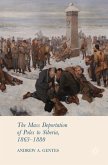High Quality Content by WIKIPEDIA articles! Stolpersteine (German expression for "stumbling blocks", obstacles, something in the way) is a project of the artist Gunter Demnig. These memorials commemorate those deported and killed by the Nazis, mostly in Nazi concentration camps or extermination camps, including Jews, Sinti and Romani people (also called gypsies), members of the resistance during World War II, homosexuals, Jehovah's Witnesses, Christians in opposition and the disabled.After Demnig had the idea in 1993, the first exhibition took place in 1994 in Cologne. The then priest of the Antoniter church encouraged the project. In 1995 Demnig began to install Stolpersteine on trial without approval in Cologne, then in Berlin-Kreuzberg. In 1996 he set out 55 Stolpersteine in Berlin within the scope of the project ?artists investigate after Auschwitz?. 1997 he put down the first two Stolpersteine for Jehovah's Witnesses in Sankt Georgen bei Salzburg, Austria on the suggestion of the cultural initiative KNIE and Austrian Holocaust Memorial Service. Four years later, he received permission to put up 600 more Stolpersteine in Cologne.








